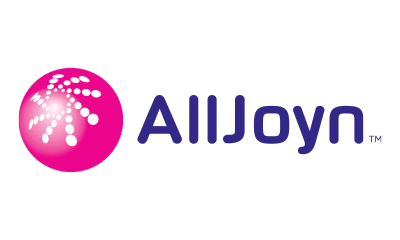As the hype around the Internet of things continues to build, the major players in the consumer electronics markets are working hard to build out software that allows devices to connect to the Internet and each other, and then communicate what they can and cannot do. Apple has HomeKit, a group of chip firms led by Intel is launching the IoTivity standard, Google last month announced Weave and Brillo, and Qualcomm with Microsoft are pushing AllJoyn.

The company, or companies, whose software becomes an industry standard can generate a huge advantage by controlling how an entire ecosystem of products develop. With AllJoyn, Qualcomm was the first to propose a standard for the Internet of Things that would sit on top of existing wireless technologies. The idea was that the developers could build a device and insert a few lines of code and their products would be able to communicate with other products sharing the AllJoyn Code.
The AllSeen Alliance was established to bring partners of this standard together, and Microsoft’s contribution is the Open Source AllJoyn DSB (Device System Bridge). AllSeen calls the DSB a “superconnector” because it could bring AllJoyn devices into contact with many other new and legacy IoT platforms in a way that looks native.
"Millions of connected devices exist. We see significant savings for companies that bridge existing automation systems and devices to leverage their existing infrastructure and put it to work in IoT", said Jason Farmer, AllSeen Alliance Gateway Working Group contributor and Lead Program Manager at Microsoft. "Microsoft is committed to making the IoT as accessible, secure, cost-effective and simple as possible. Our DSB contribution to the AllSeen Alliance will help bring real-world applications to market quickly with existing devices and infrastructure, accelerating the Internet of Your Things”.
By also enfranchising AllJoyn in Windows 10, Microsoft is positioning itself to play a prominent position in the new world of IoT. The AllJoyn DSB code that Microsoft released allows companies to let their existing IoT interfaces speak to AllJoyn. Crucially it also supports Z-wave, for consumer electronics, and BACnet, which is used in build automation systems (BAS), bringing these platforms into the IoT.
A recent Memoori report focuses on this transformation of BAS into the Building Internet of Things (BIoT). The report shows that major disruption is on its way as both the competitive landscape and the supply chain will change for all those suppliers who want to engage in the wider BIoT business, which is expected to reach $76Bn by 2020. The supply side will also be disturbed as the contractual procedures and routes to market will be forced to change as BAS morphs to BIoT.
[contact-form-7 id="3204" title="memoori-newsletter"]
The technology has already been proving to be helpful in solving some of their current connectivity challenges according to Quanta Computer, an AllSeen Alliance member and one of Microsoft's partners. "We build smart home solutions that help monitor living conditions in homes such as air quality, temperature and humidity as well as automate surveillance activities. Using the AllJoyn DSB technology, we were able to quickly prototype and demonstrate solutions to our customers helping us focus our time on their business requirements", said Terrisa Chung, General Manager and Vice President of Quanta Computer.
IoT technology is becoming embedded into everything and integrating more seamlessly with our lives. By 2020, 30 billion things will be connected as every product more than $100 will be smart, Gartner predicts. The Internet of Everything means that products from different companies will need to communicate with each other. Consumers and businesses will have devices, systems and services from a variety of brands and vendors running in their homes and businesses.
The Internet of Everything doesn’t work unless the “everything” works together. Interoperability is key. Through interoperability based on an open framework, consumers and enterprises will be exposed to a new, simple, seamless and universal work of connectivity. This IoT connectivity will enable new experiences and ways of using smart data and products and services.



